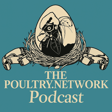
Tim Burnside, Aviagen: Breeding Poultry For Higher Sustainability, Welfare and Performance
In the very first episode of the Poultry.Network Sustainability Hub Podcast, Tom Willings speaks with Tim Burnside, Global Vice President for Welfare, Sustainability and Compliance at Aviagen Group.
The Sustainability Hub was established by Poultry Network to showcase how every part of the poultry meat and egg production chain is working towards a more sustainable future.
In a series of podcasts, our pioneers in sustainable poultry production take to the mic to discuss the latest innovations and insights in their businesses and how their progress might help shape the future further afield.
Aviagen are at the vanguard of the poultry industry, but as we learn in our discussion with Tim, there’s more to Aviagen than the Ross 308 and a keen eye for selection.
Aviagen is a business pioneering scientific research, accelerating the implementation of technology to protect valuable natural resources and, perhaps above all, acting as an influential force for good in sharing knowledge and recognising best practices across a diverse network of customers and global stakeholders.
Tim, who has devoted a career of thirty years to the company, uses his extraordinary commitment and experience to guide the global Aviagen Group on policies and developments seeking to champion and further advance bird welfare and sustainability. In his role, Tim travels extensively, presenting as an authority to the wider industry and sharing his vast knowledge.
An active contributor and chair of multiple sustainability-focused working groups across the world, there can be no-one better placed to kickstart the conversation.
In a wide-ranging dialogue, Tim and Tom discuss the nitty-gritty of the Aviagen breeding program.
Tim brings to life the strategic balancing act of keeping a steady yet progressive eye on the selection process, ensuring a pragmatic approach to the levers of productivity and welfare.
Rather than presenting such a balance as a compromise, Tim explains the resources at Aviagen to create the ideal blend of features for a given market.
Tim points to the importance of farm management along with genetics in outcomes of health and performance.
Aviagen’s long-term corporate program of recognising success at the grassroots level is a resounding success and has created the blueprint for continuous improvement, from individual farms to integrated supply chains.
Looking ahead to the changing marketplace facing the sustainability challenges of the present day, the pair explore how the sector at large is well prepared not only to adapt but to thrive.
As a global poultry industry, we’re providing an all-important healthy and cost-effective protein source, but doing so with ever-greater care and responsibility to the bird and the planet.
With thanks to our sponsors, Alltech, Aviagen, Elanco, Moy Park, Trouw Nutrition, UK Agri-Tech Centres

